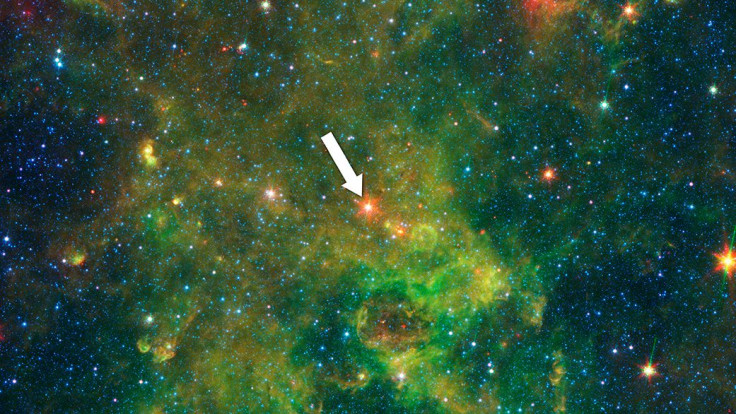IRAS 19312+1950: Astronomers Struggle To Figure Out The True Age Of The Distant, Massive Star

Is the star IRAS 19312+1950 young or old? The answer to the question, which at first glance seems a straightforward one, is, upon further examination, anything but.
The problem is, the massive star, located 12,000 light-years from Earth, simultaneously exhibits certain traits that have only ever been observed in extremely old stars, and some that are only associated with protostars — extremely young stars in the their formative years.
“Astronomers recognized this object as noteworthy around the year 2000 and have been trying ever since to decide how far along its development is,” Martin Cordiner, an astrochemist working at NASA’s Goddard Space Flight Center in Greenbelt, Maryland, and lead author of a paper describing the object, said in a statement released Monday.
The evidence in favor of the star being old comes from detection of masers, which the European Space Agency describes as “the microwave equivalent of a visible-light laser.” Data gathered by the ESA’s Herschel Space Observatory and NASA’s Spitzer Space Telescope shows that the star is emitting silicon oxide and hydroxyl masers in patterns that are exclusively associated with late-stage stars.
However, this evidence is countered by the presence a chemical-rich cloud, typical of the regions where new stars are being born, around IRAS 19312+1950. Moreover, the dense chemical cloud, which, at an estimated mass of between 500 and 700 suns is much higher than what can be produced by old stars, appears to be collapsing, which only happens when a growing star pulls in material.
There are two possible explanations for this inexplicable behavior. One, the star is actually an old one, but is surrounded, for reasons not yet understood, by a chemical cloud typically found surrounding young stars. Two, astronomers are actually seeing two objects — a young star and an old one — located in close proximity to each other.
Whatever the answer to the puzzle may be, one thing is clear — IRAS 19312+1950 is far from a run-of-the-mill star.
“No matter how one looks at this object, it’s fascinating, and it has something new to tell us about the life cycles of stars,” co-author Steven Charnley, a Goddard astrochemist, said.
© Copyright IBTimes 2024. All rights reserved.












